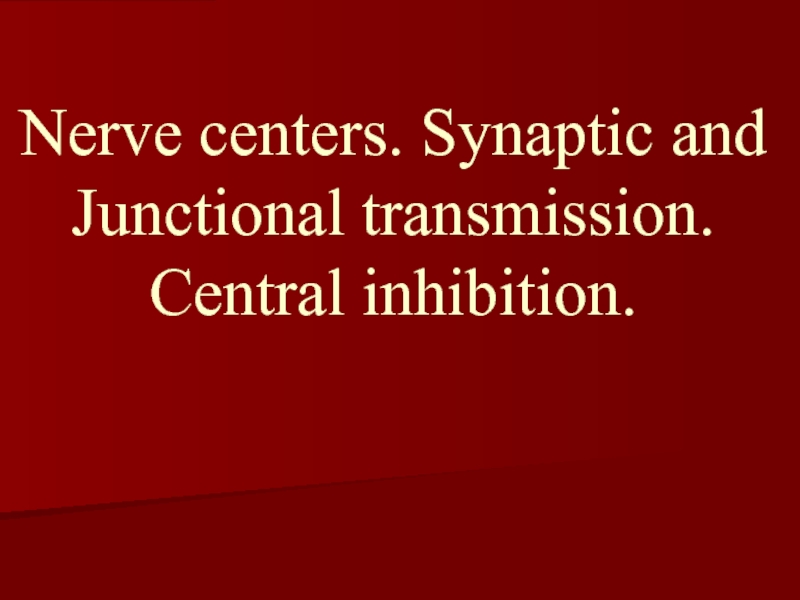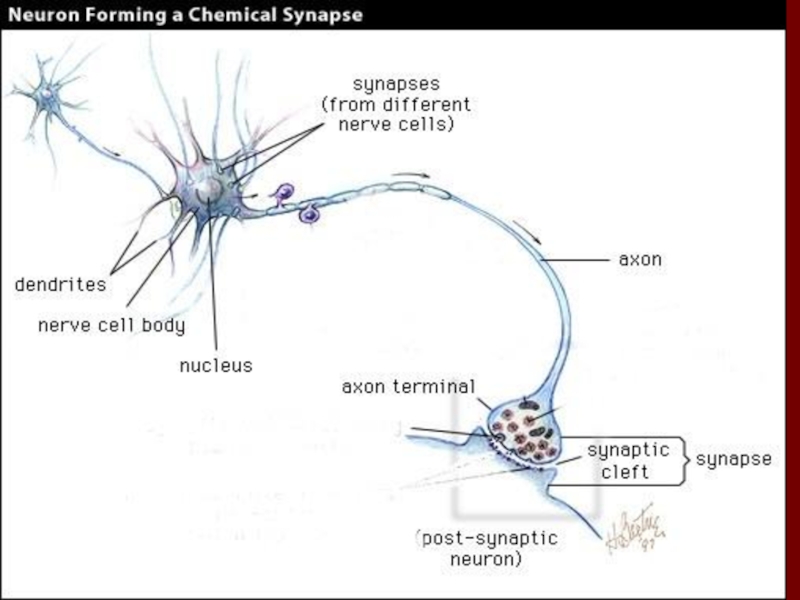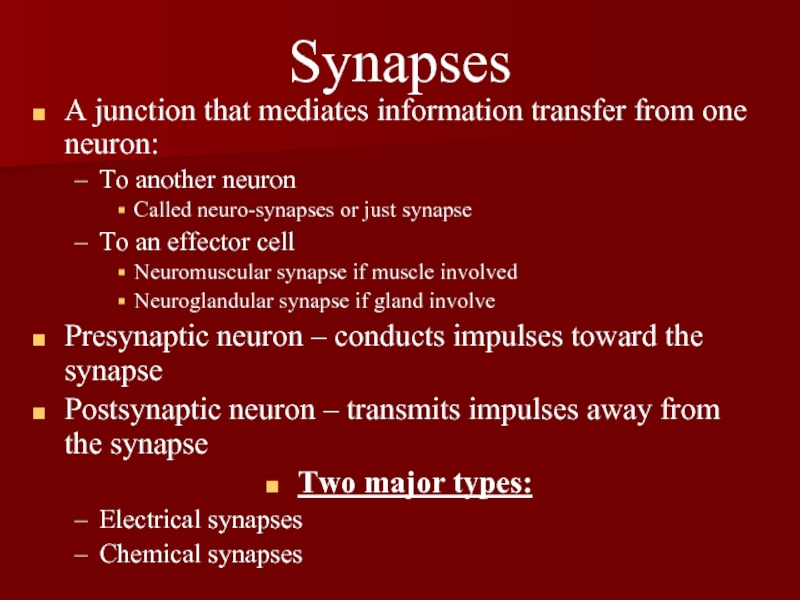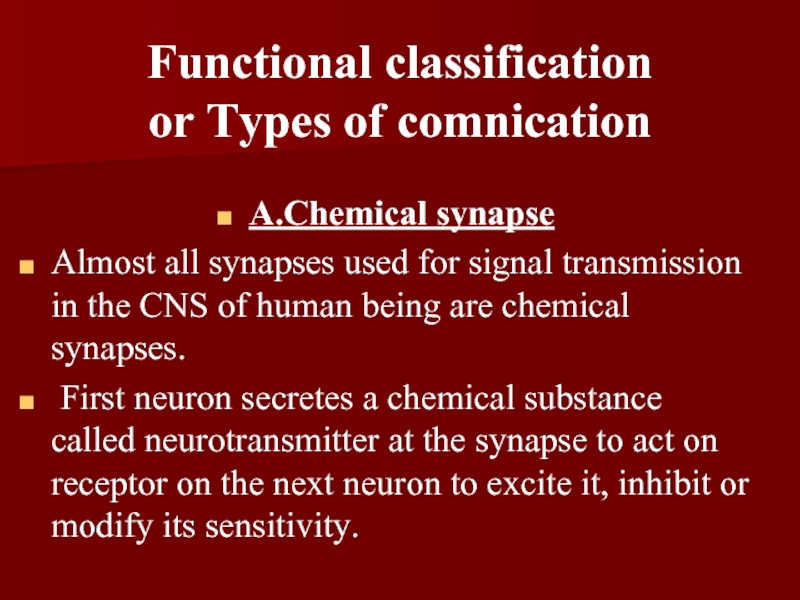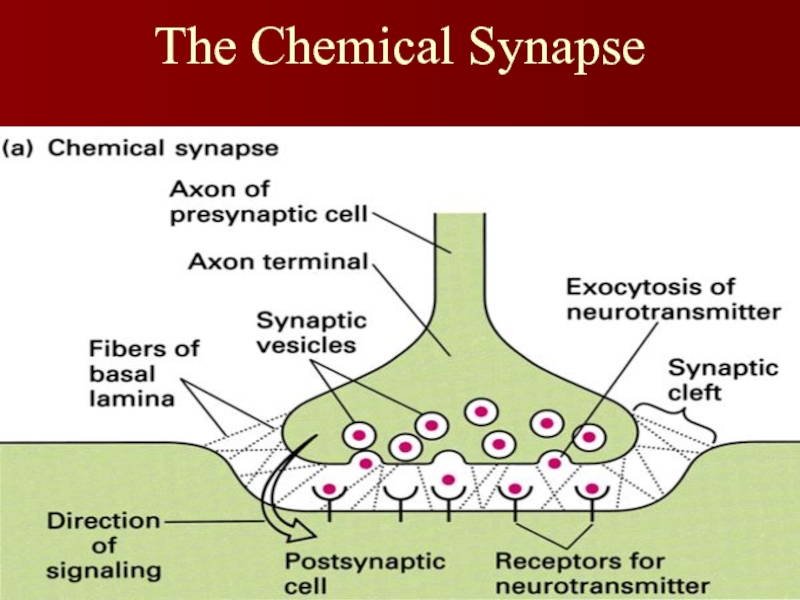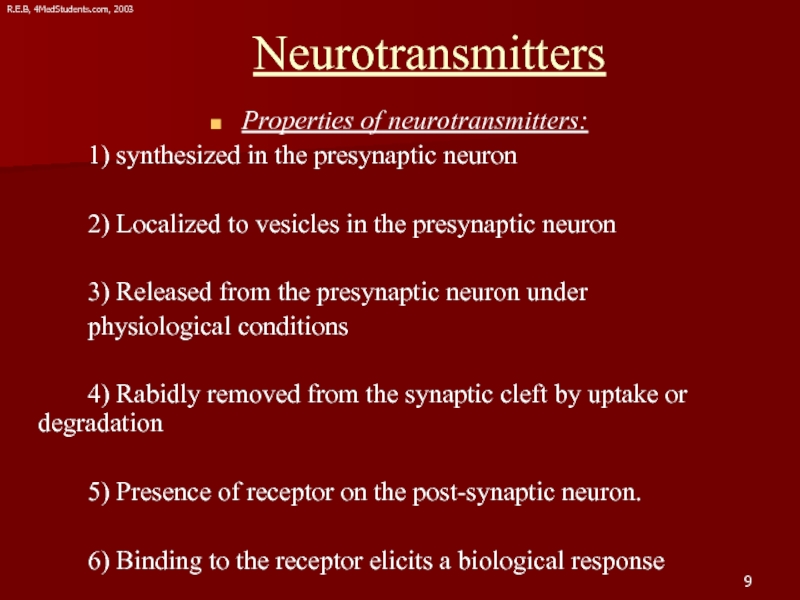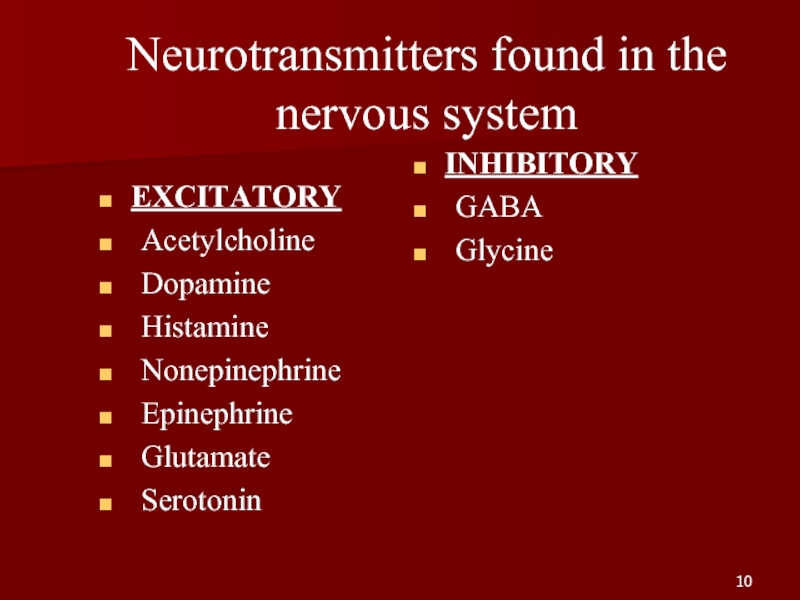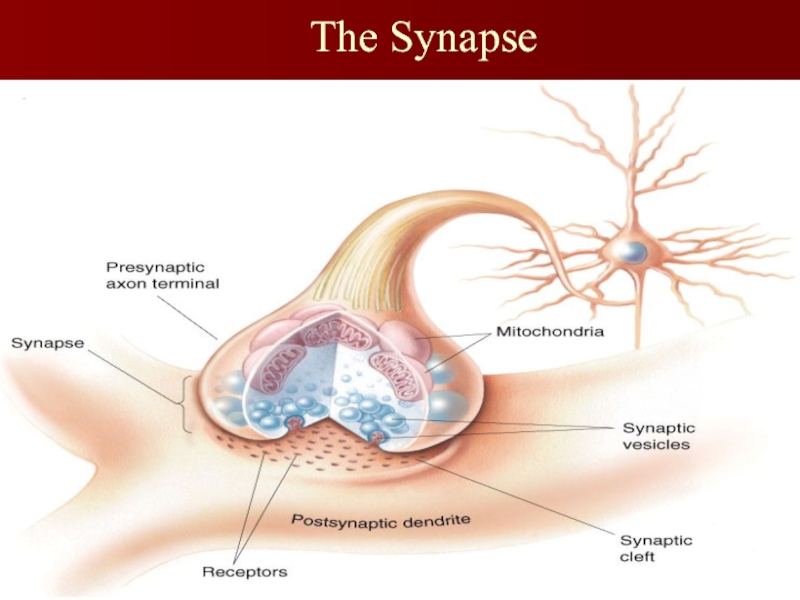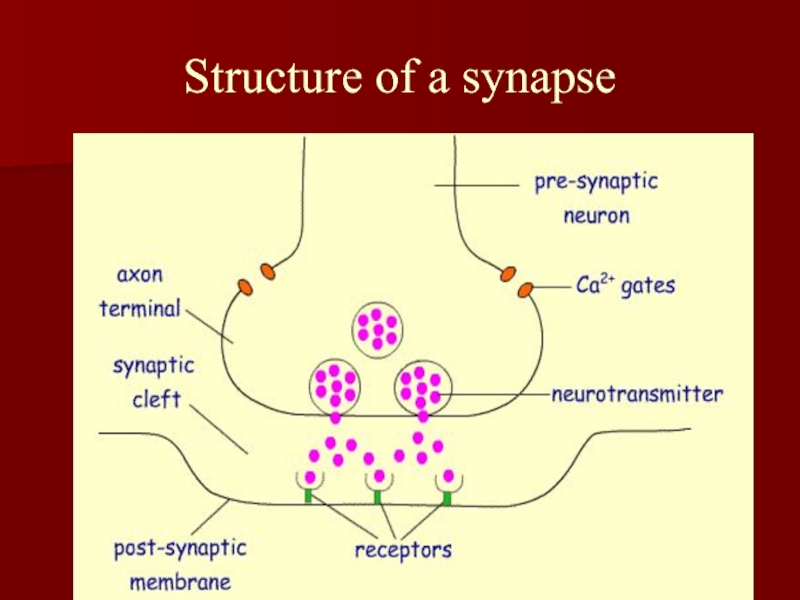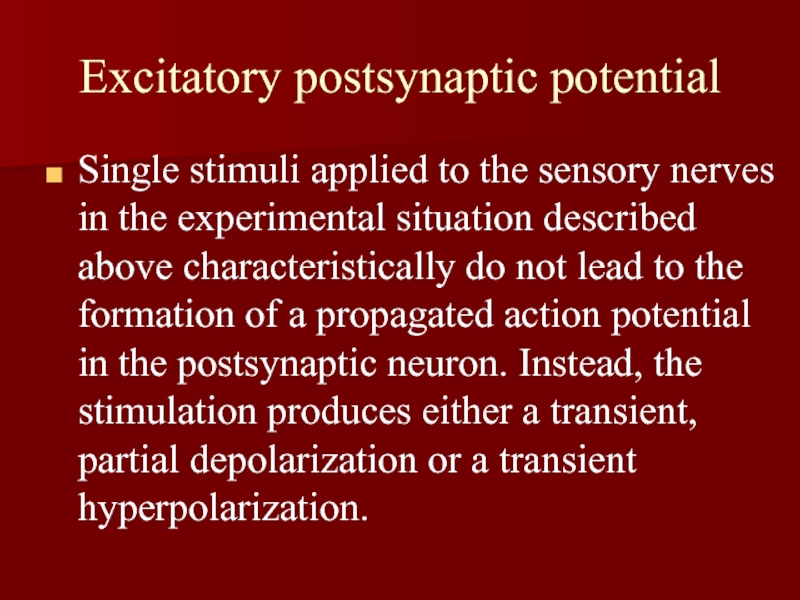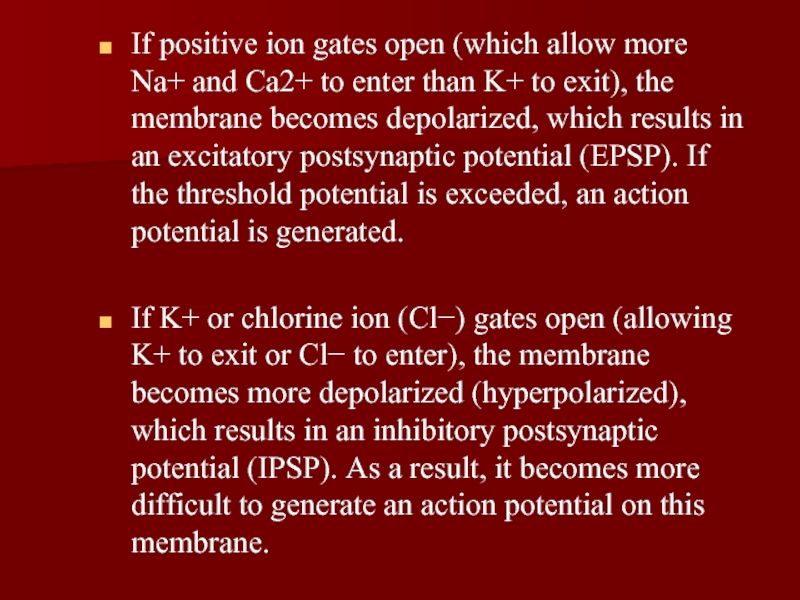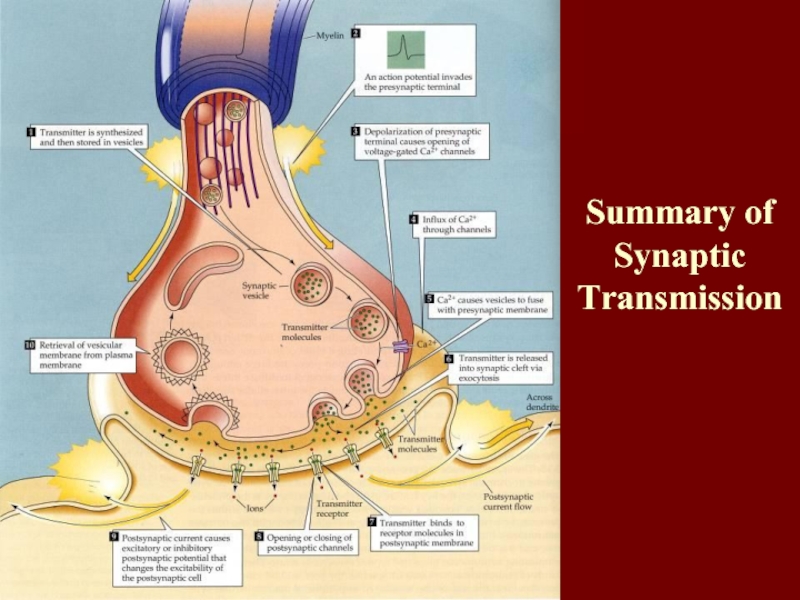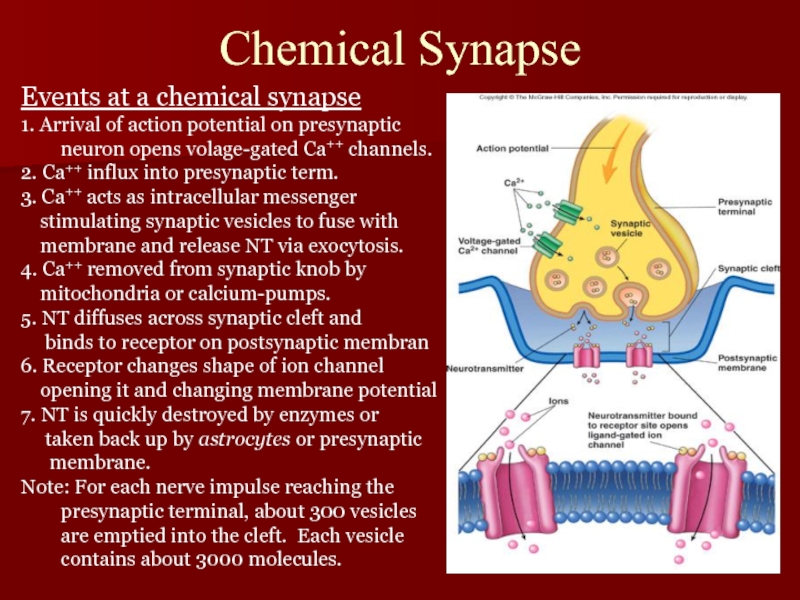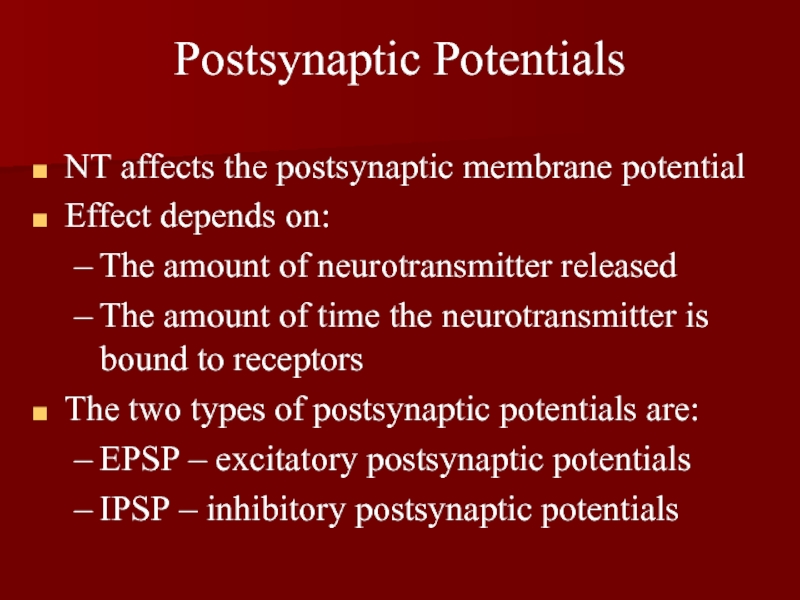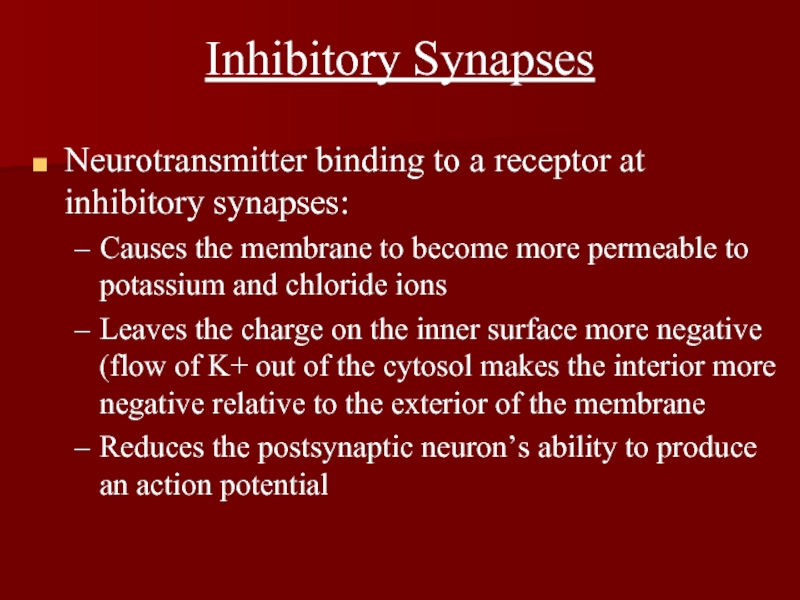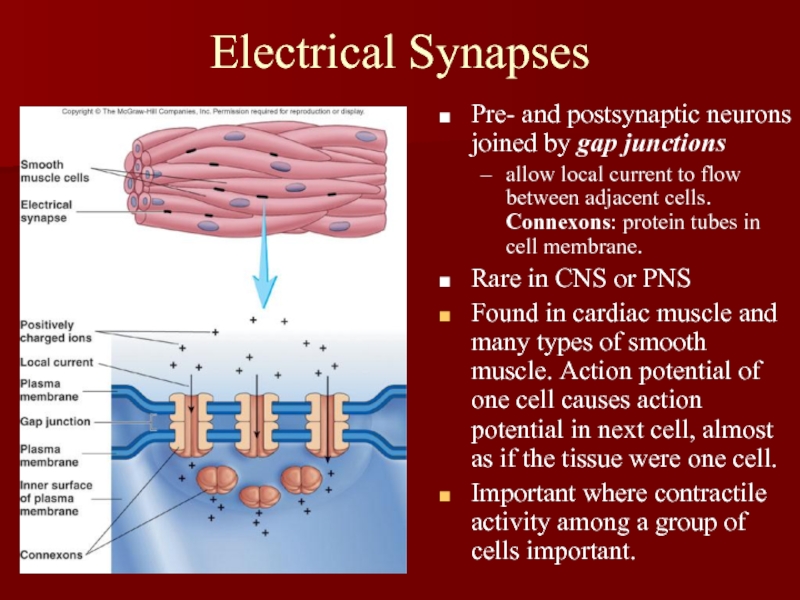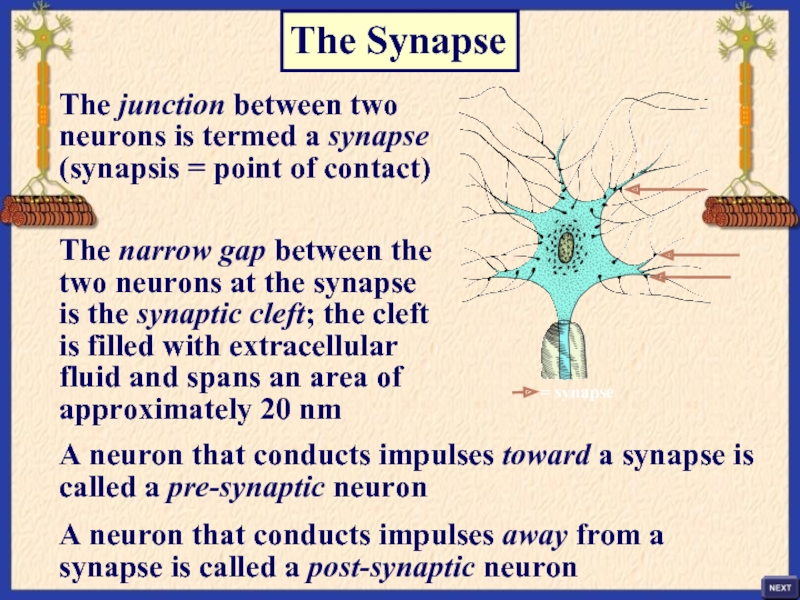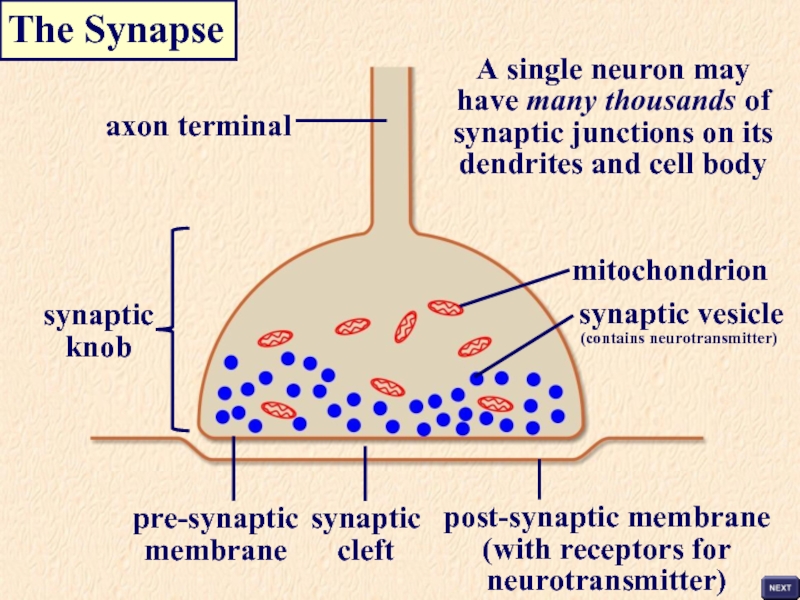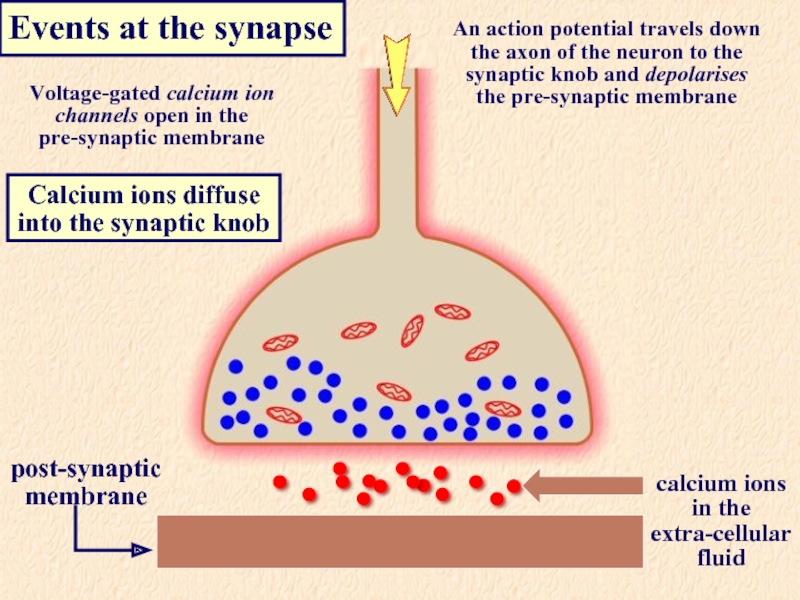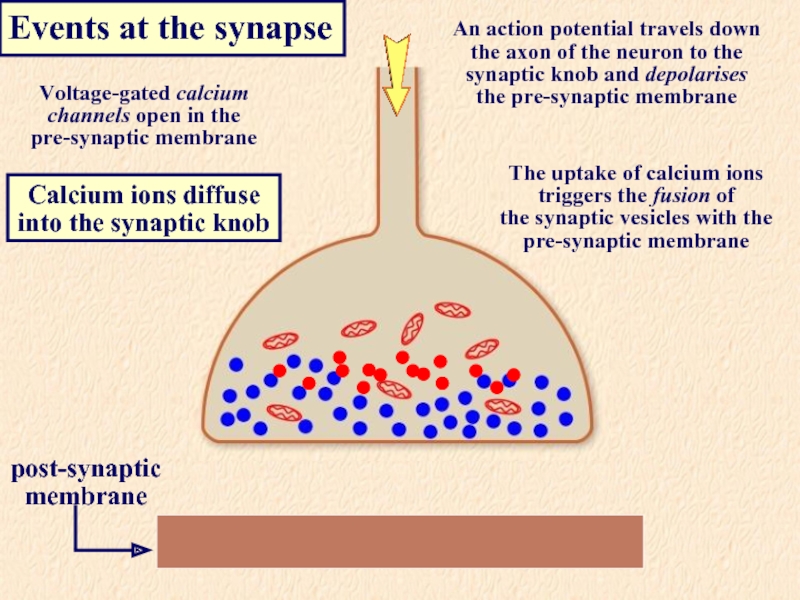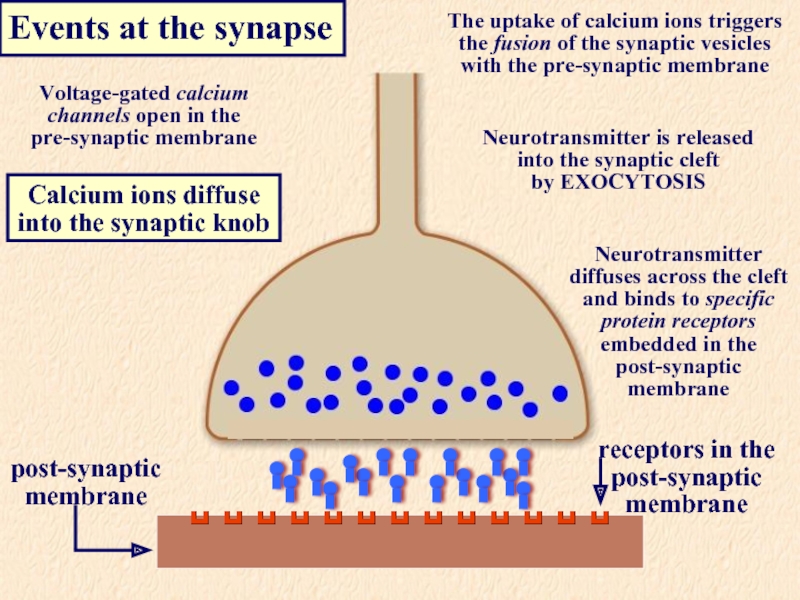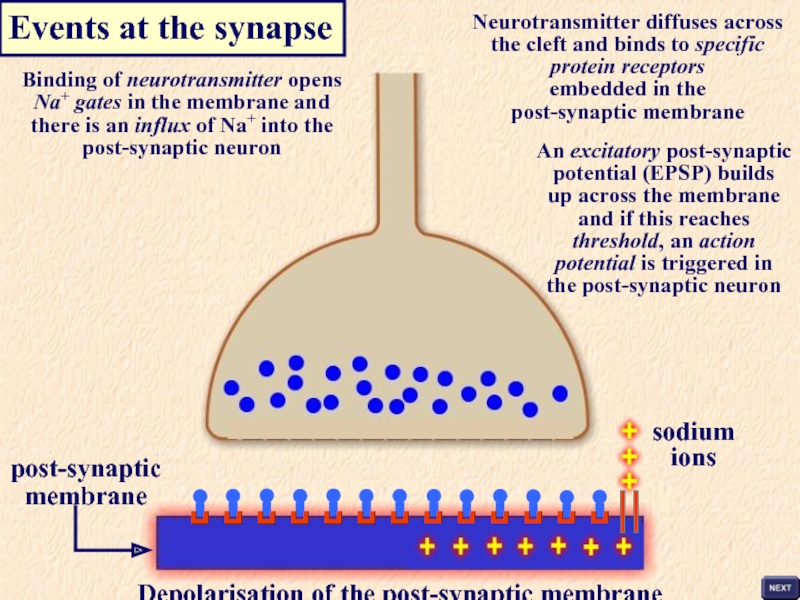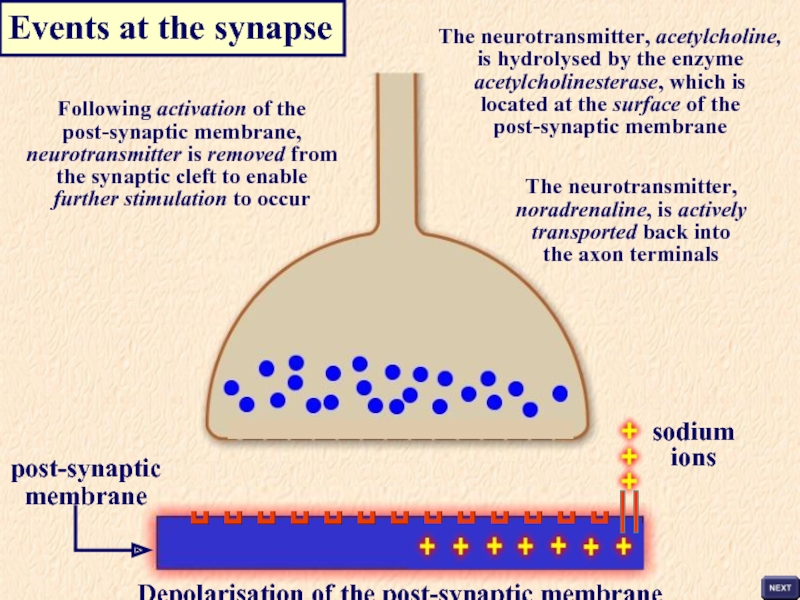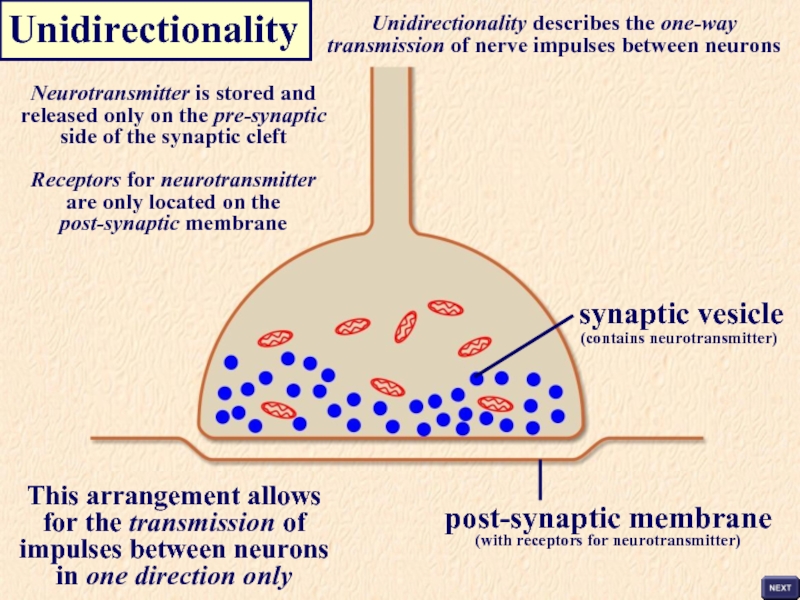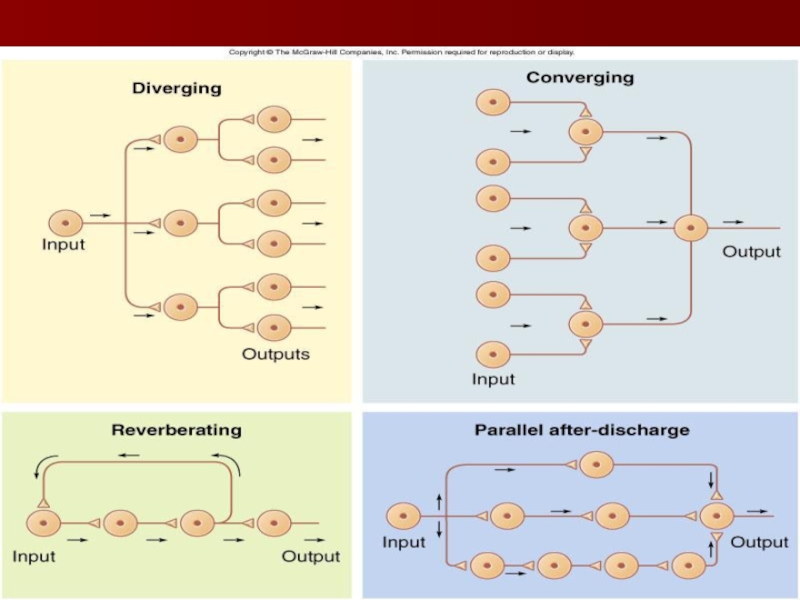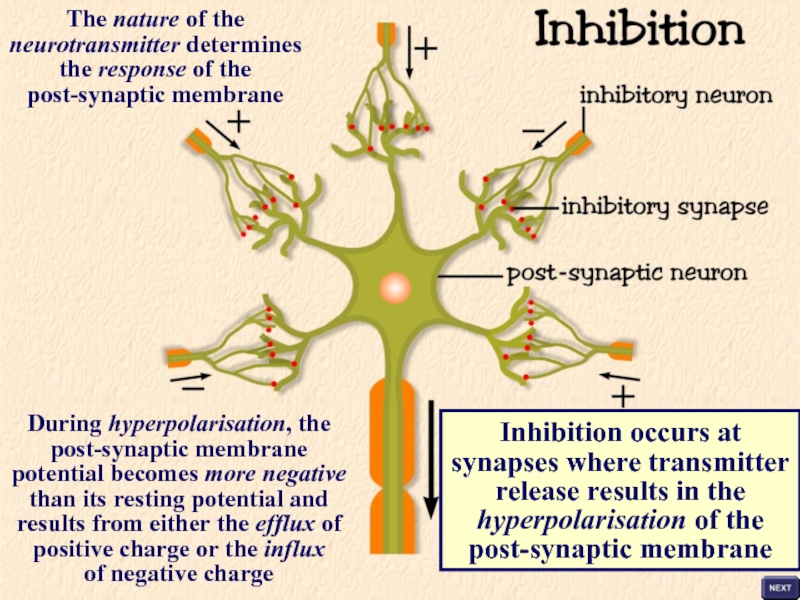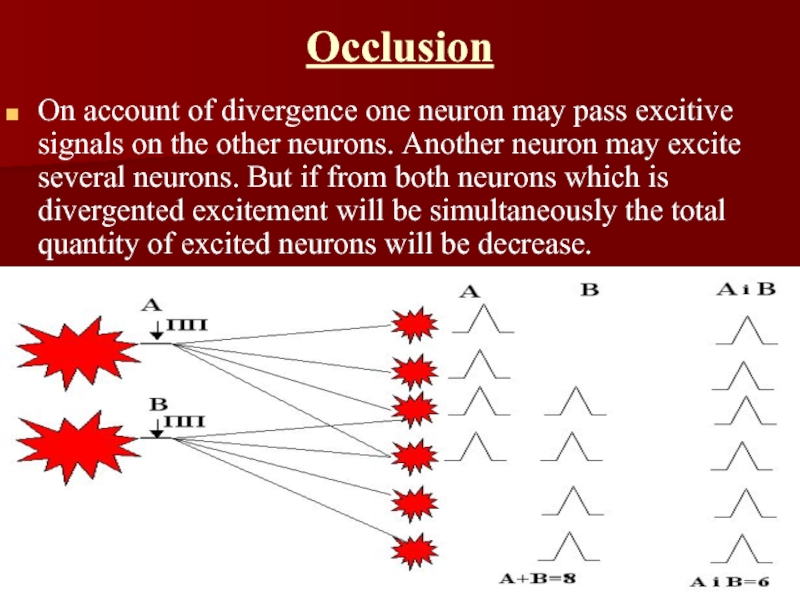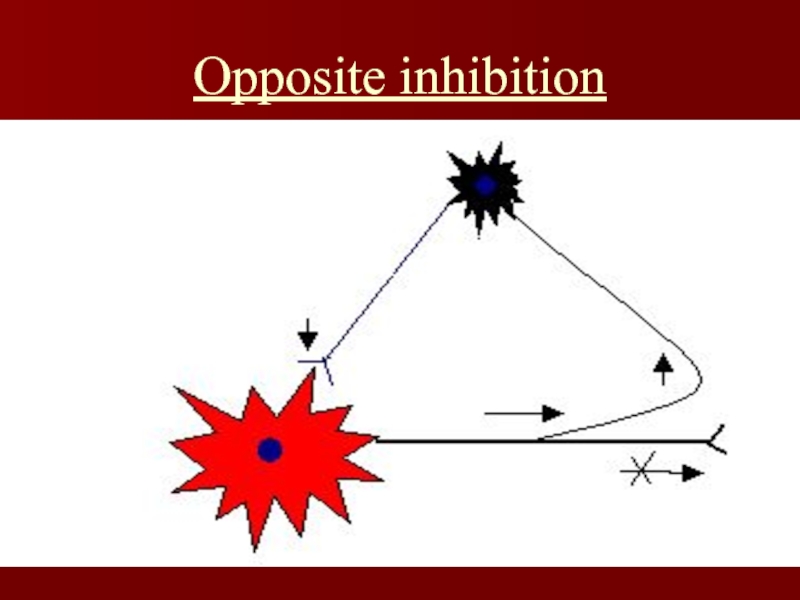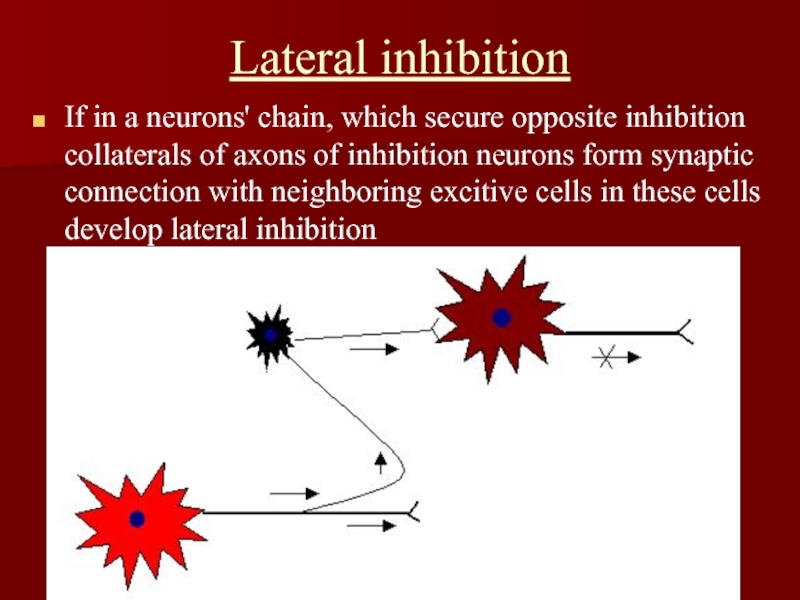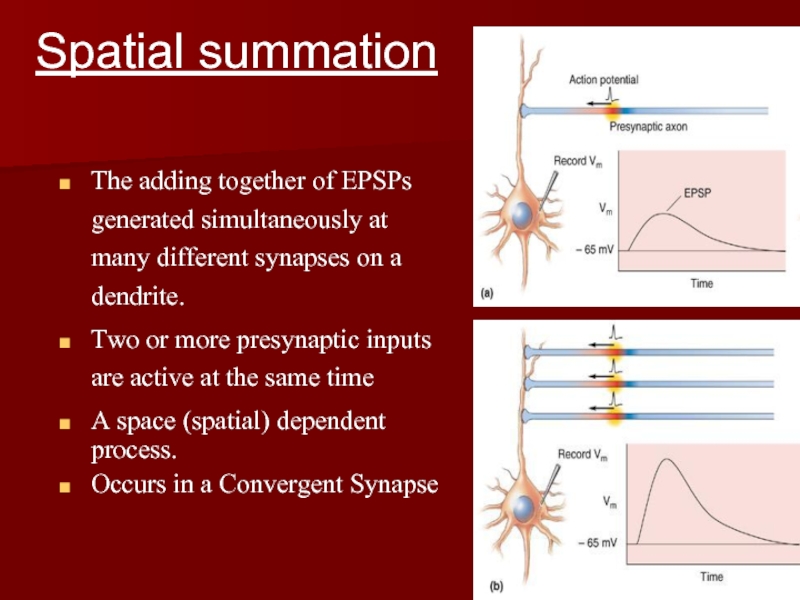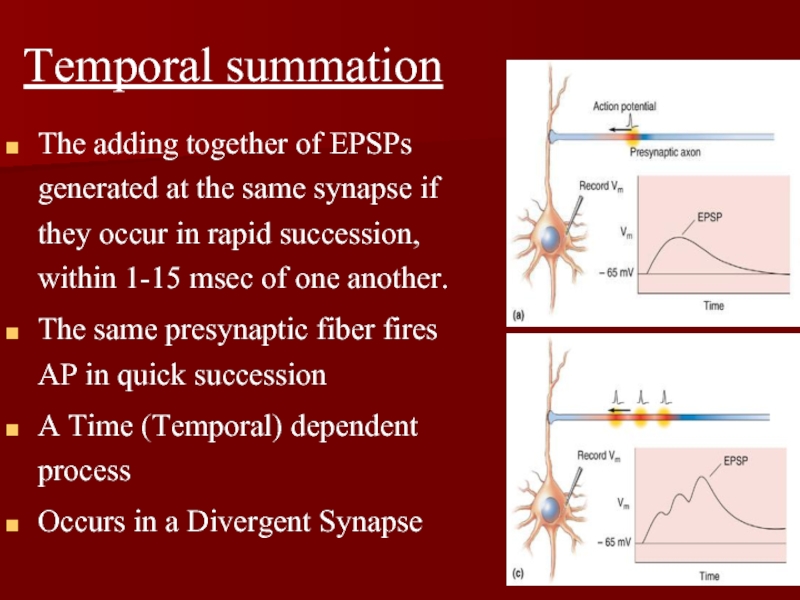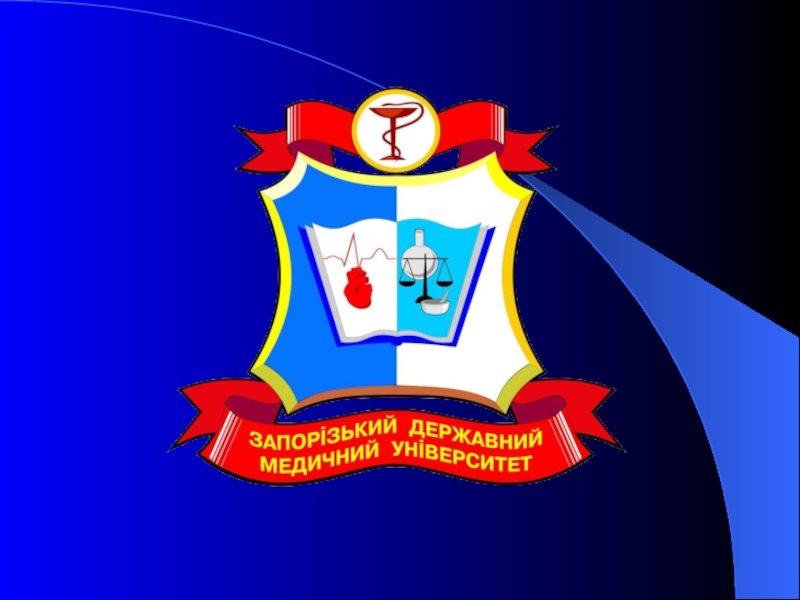- Главная
- Разное
- Дизайн
- Бизнес и предпринимательство
- Аналитика
- Образование
- Развлечения
- Красота и здоровье
- Финансы
- Государство
- Путешествия
- Спорт
- Недвижимость
- Армия
- Графика
- Культурология
- Еда и кулинария
- Лингвистика
- Английский язык
- Астрономия
- Алгебра
- Биология
- География
- Детские презентации
- Информатика
- История
- Литература
- Маркетинг
- Математика
- Медицина
- Менеджмент
- Музыка
- МХК
- Немецкий язык
- ОБЖ
- Обществознание
- Окружающий мир
- Педагогика
- Русский язык
- Технология
- Физика
- Философия
- Химия
- Шаблоны, картинки для презентаций
- Экология
- Экономика
- Юриспруденция
Nerve centers. Synaptic and junctional transmission. Central inhibition презентация
Содержание
- 1. Nerve centers. Synaptic and junctional transmission. Central inhibition
- 2. What is a synapse? A synapse is
- 4. A junction that mediates information transfer from
- 5. Anatomical Types of Synapses Axo-dendritic – synapses
- 6. Functional classification or Types of comnication A.Chemical
- 7. The chemical synapse is a
- 8. The Chemical Synapse
- 9. Neurotransmitters Properties of neurotransmitters: 1) synthesized
- 10. Neurotransmitters found in the nervous system EXCITATORY
- 11. The Synapse
- 12. Structure of a synapse
- 13. Excitatory postsynaptic potential Single stimuli applied
- 14. If positive ion gates open (which allow
- 15. Summary of Synaptic Transmission
- 16. Chemical Synapse Events at a chemical synapse
- 17. NT affects the postsynaptic membrane potential Effect
- 18. Neurotransmitter binding to a receptor at inhibitory
- 19. Electrical Synapses Pre- and postsynaptic neurons joined
- 20. The Synapse The junction between two neurons
- 21. The Synapse A single neuron may have
- 22. An action potential travels down the
- 23. An action potential travels down the
- 25. Events at the synapse Neurotransmitter diffuses
- 26. Events at the synapse The neurotransmitter,
- 27. Unidirectionality Unidirectionality describes the one-way transmission of
- 29. Inhibition occurs at synapses where transmitter release
- 30. Occlusion On account of divergence one neuron
- 31. Opposite inhibition
- 32. Lateral inhibition If in a neurons' chain,
- 33. Spatial summation The adding together of EPSPs
- 34. Temporal summation The adding together of EPSPs
Слайд 2What is a synapse?
A synapse is the junction between 2 neurones.
A
Слайд 4A junction that mediates information transfer from one neuron:
To another neuron
Called
To an effector cell
Neuromuscular synapse if muscle involved
Neuroglandular synapse if gland involve
Presynaptic neuron – conducts impulses toward the synapse
Postsynaptic neuron – transmits impulses away from the synapse
Two major types:
Electrical synapses
Chemical synapses
Synapses
Слайд 5Anatomical Types of Synapses
Axo-dendritic – synapses between the axon of one
Axo-somatic – synapses between the axon of one neuron and the soma of another
Other types of synapses include:
Axo-axonic (axon to axon)
Dendro-dendritic (dendrite to dendrite)
Dendro-somatic (dendrites to soma)
Слайд 6Functional classification
or Types of comnication
A.Chemical synapse
Almost all synapses used for signal
First neuron secretes a chemical substance called neurotransmitter at the synapse to act on receptor on the next neuron to excite it, inhibit or modify its sensitivity.
Слайд 7 The chemical synapse is a specialized junction that transfers
Axo-dendritic synapse Axo-somatic synanpse Axo-axonic synapse
Слайд 9Neurotransmitters
Properties of neurotransmitters:
1) synthesized in the presynaptic neuron
2) Localized to
3) Released from the presynaptic neuron under
physiological conditions
4) Rabidly removed from the synaptic cleft by uptake or degradation
5) Presence of receptor on the post-synaptic neuron.
6) Binding to the receptor elicits a biological response
R.E.B, 4MedStudents.com, 2003
Слайд 10Neurotransmitters found in the nervous system
EXCITATORY
Acetylcholine
Dopamine
Histamine
Nonepinephrine
Epinephrine
Glutamate
Serotonin
INHIBITORY
GABA
Glycine
Слайд 13Excitatory postsynaptic potential
Single stimuli applied to the sensory nerves in
Слайд 14If positive ion gates open (which allow more Na+ and Ca2+
If K+ or chlorine ion (Cl−) gates open (allowing K+ to exit or Cl− to enter), the membrane becomes more depolarized (hyperpolarized), which results in an inhibitory postsynaptic potential (IPSP). As a result, it becomes more difficult to generate an action potential on this membrane.
Слайд 16Chemical Synapse
Events at a chemical synapse
1. Arrival of action potential on
2. Ca++ influx into presynaptic term.
3. Ca++ acts as intracellular messenger
stimulating synaptic vesicles to fuse with
membrane and release NT via exocytosis.
4. Ca++ removed from synaptic knob by
mitochondria or calcium-pumps.
5. NT diffuses across synaptic cleft and
binds to receptor on postsynaptic membran
6. Receptor changes shape of ion channel
opening it and changing membrane potential
7. NT is quickly destroyed by enzymes or
taken back up by astrocytes or presynaptic
membrane.
Note: For each nerve impulse reaching the presynaptic terminal, about 300 vesicles are emptied into the cleft. Each vesicle contains about 3000 molecules.
Слайд 17NT affects the postsynaptic membrane potential
Effect depends on:
The amount of neurotransmitter
The amount of time the neurotransmitter is bound to receptors
The two types of postsynaptic potentials are:
EPSP – excitatory postsynaptic potentials
IPSP – inhibitory postsynaptic potentials
Postsynaptic Potentials
Слайд 18Neurotransmitter binding to a receptor at inhibitory synapses:
Causes the membrane
Leaves the charge on the inner surface more negative (flow of K+ out of the cytosol makes the interior more negative relative to the exterior of the membrane
Reduces the postsynaptic neuron’s ability to produce an action potential
Inhibitory Synapses
Слайд 19Electrical Synapses
Pre- and postsynaptic neurons joined by gap junctions
allow local
Rare in CNS or PNS
Found in cardiac muscle and many types of smooth muscle. Action potential of one cell causes action potential in next cell, almost as if the tissue were one cell.
Important where contractile activity among a group of cells important.
Слайд 20The Synapse
The junction between two neurons is termed a synapse
(synapsis =
The narrow gap between the two neurons at the synapse is the synaptic cleft; the cleft is filled with extracellular fluid and spans an area of approximately 20 nm
A neuron that conducts impulses toward a synapse is called a pre-synaptic neuron
A neuron that conducts impulses away from a synapse is called a post-synaptic neuron
Слайд 21The Synapse
A single neuron may have many thousands of synaptic junctions
Слайд 22
An action potential travels down
the axon of the neuron to the
synaptic knob and depolarises
the pre-synaptic membrane
Events at the synapse
Voltage-gated calcium ion
channels open in the
pre-synaptic membrane
Calcium ions diffuse
into the synaptic knob
Слайд 23
An action potential travels down
the axon of the neuron to the
synaptic knob and depolarises
the pre-synaptic membrane
Voltage-gated calcium
channels open in the
pre-synaptic membrane
Calcium ions diffuse
into the synaptic knob
Events at the synapse
The uptake of calcium ions triggers the fusion of
the synaptic vesicles with the pre-synaptic membrane
Слайд 24
Neurotransmitter is released
into the synaptic cleft
by EXOCYTOSIS
Voltage-gated calcium
channels open in the
pre-synaptic
Calcium ions diffuse
into the synaptic knob
The uptake of calcium ions triggers the fusion of the synaptic vesicles with the pre-synaptic membrane
Events at the synapse
Neurotransmitter diffuses across the cleft and binds to specific protein receptors
embedded in the
post-synaptic membrane
Слайд 25
Events at the synapse
Neurotransmitter diffuses across the cleft and binds to
embedded in the post-synaptic membrane
Binding of neurotransmitter opens Na+ gates in the membrane and there is an influx of Na+ into the
post-synaptic neuron
An excitatory post-synaptic potential (EPSP) builds
up across the membrane
and if this reaches
threshold, an action
potential is triggered in
the post-synaptic neuron
Слайд 26
Events at the synapse
The neurotransmitter, acetylcholine,
is hydrolysed by the enzyme acetylcholinesterase,
Following activation of the
post-synaptic membrane, neurotransmitter is removed from the synaptic cleft to enable
further stimulation to occur
The neurotransmitter, noradrenaline, is actively transported back into
the axon terminals
Слайд 27Unidirectionality
Unidirectionality describes the one-way transmission of nerve impulses between neurons
Neurotransmitter is
This arrangement allows for the transmission of impulses between neurons in one direction only
Receptors for neurotransmitter are only located on the
post-synaptic membrane
Слайд 29Inhibition occurs at synapses where transmitter release results in the hyperpolarisation
During hyperpolarisation, the post-synaptic membrane potential becomes more negative than its resting potential and results from either the efflux of positive charge or the influx
of negative charge
The nature of the neurotransmitter determines the response of the
post-synaptic membrane
Слайд 30Occlusion
On account of divergence one neuron may pass excitive signals on
Слайд 32Lateral inhibition
If in a neurons' chain, which secure opposite inhibition collaterals
Слайд 33Spatial summation
The adding together of EPSPs generated simultaneously at many different
Two or more presynaptic inputs are active at the same time
A space (spatial) dependent process.
Occurs in a Convergent Synapse
Слайд 34Temporal summation
The adding together of EPSPs generated at the same synapse
The same presynaptic fiber fires AP in quick succession
A Time (Temporal) dependent process
Occurs in a Divergent Synapse
